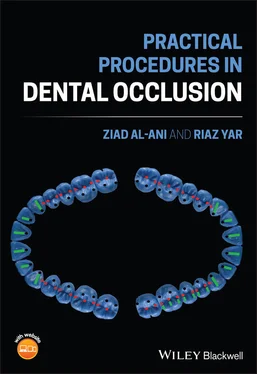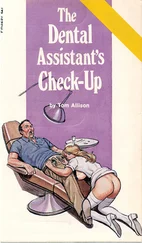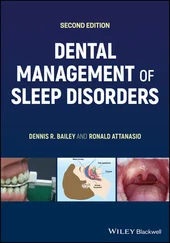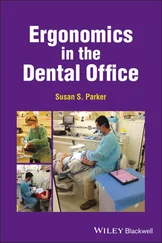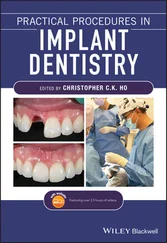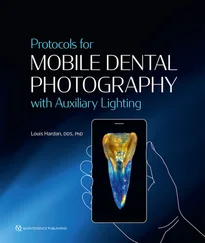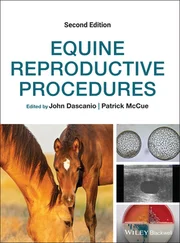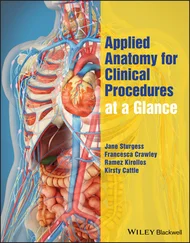Ziad Al-Ani - Practical Procedures in Dental Occlusion
Здесь есть возможность читать онлайн «Ziad Al-Ani - Practical Procedures in Dental Occlusion» — ознакомительный отрывок электронной книги совершенно бесплатно, а после прочтения отрывка купить полную версию. В некоторых случаях можно слушать аудио, скачать через торрент в формате fb2 и присутствует краткое содержание. Жанр: unrecognised, на английском языке. Описание произведения, (предисловие) а так же отзывы посетителей доступны на портале библиотеки ЛибКат.
- Название:Practical Procedures in Dental Occlusion
- Автор:
- Жанр:
- Год:неизвестен
- ISBN:нет данных
- Рейтинг книги:3 / 5. Голосов: 1
-
Избранное:Добавить в избранное
- Отзывы:
-
Ваша оценка:
- 60
- 1
- 2
- 3
- 4
- 5
Practical Procedures in Dental Occlusion: краткое содержание, описание и аннотация
Предлагаем к чтению аннотацию, описание, краткое содержание или предисловие (зависит от того, что написал сам автор книги «Practical Procedures in Dental Occlusion»). Если вы не нашли необходимую информацию о книге — напишите в комментариях, мы постараемся отыскать её.
A robust and accessible resource on occlusion for general dental practitioners Practical Procedures in Dental Occlusion
Practical Procedures in Dental Occlusion
Practical Procedures in Dental Occlusion — читать онлайн ознакомительный отрывок
Ниже представлен текст книги, разбитый по страницам. Система сохранения места последней прочитанной страницы, позволяет с удобством читать онлайн бесплатно книгу «Practical Procedures in Dental Occlusion», без необходимости каждый раз заново искать на чём Вы остановились. Поставьте закладку, и сможете в любой момент перейти на страницу, на которой закончили чтение.
Интервал:
Закладка:
Chapter 12 – Canine Guidance or Group Function?
This has been an ongoing debate over many years with discussions on which lateral‐based occlusal scheme is the best for the patient. This chapter will discuss the rationale behind both and how to achieve them clinically.
Chapter 13 – Replacing Missing Teeth – Abutment is Involved with Guidance
This clinical scenario will highlight the flowing points:
checking the guidance prior to commencing treatment
conforming to the guidance by selecting a treatment plan which avoids changing it.
Chapter 14 – The Space is Lost! Loss of Occlusal Space Following Crown Prep
This chapter will discuss the significant concepts which need to be understood and planned when considering restoration of a tooth involved in the centric relation/retruded contact position. How to manage when the space is suddenly lost during crown preparation on a tooth that is the last in the arch.
Chapter 15 – My Front Teeth Are Worn
Management of tooth surface loss is a complex treatment but some straightforward rules will help in diagnosis of the cause, monitoring of the situation and its management.
This chapter will illustrate the principles of management of non‐carious tooth surface loss (TSL) cases and will focus on:
achieving an appropriate OVD (when and how)
review of mounted study casts
diagnostic wax‐up
Dahl concept.
Chapter 16 – All My Teeth Are Restored But Don't Meet Like They Did Before
In this chapter, a patient has presented with a restored mouth with multiple crowns and they feel the teeth do not meet like before. They cannot find a comfortable position. The use of material that allows testing the increase of OVD when managing advanced restorative care cases will be discussed. A full description of clinical procedure will be offered here.
Chapter 17 – I Am Breaking My Teeth and Veneers and Lost a Tooth Due To Grinding
The following points are discussed in this chapter:
OVD increase
improving incisal and occlusal relationships
rule of thirds
aesthetic and functional analysis.
Chapter 18 – Occlusion on Implants. Any difference?
Dental implants may be more prone to occlusal overloading. A primary cause of peri‐implantitis and bone loss around implants is the excessive force applied from unwanted occlusal contact. The occlusal prescription of an implant‐supported restoration, therefore, has to be much more carefully designed than that on a natural tooth. The 10 principles of occlusion over implants are discussed in this chapter.
Glossary of Terms
This is more of a dictionary of terms than merely a glossary of terms used in this book. This chapter isolates the relevant terms from the glossary of prosthodontic terms. published regularly in the Journal of Prosthetic Dentistry.
Short Answer Questions
This chapter includes short answer questions for the reader to practise. The knowledge gained from reading this book will enable the reader to answer these questions effectively.
1 Terminology
It is important we address terminology right at the start to reduce the confusion that has been created throughout the history of occlusion. As a source, we will use the Glossary of Prosthodontic Terms (GTP) (2017) edition for the most part.
The three most important terms are defined below.
Centric occlusion ( CO )– the occlusion of opposing teeth when the mandible is in centric relation (CR); this may or may not coincide with the maximal intercuspal position (MICP) (GTP 2017). Throughout the literature (Jiménez‐Silva et al. 2017, McNamara et al. 1995, Shildkraut et al. 1994, Weffort and de Fantini 2010), centric occlusion is also known as intercuspal or MICP and hence the confusion because the same term can indicate two different positions. So, to prevent further confusion, we will state that centric occlusion is MICP.
Centric relation– this position has five main points:
1 a maxillomandibular relationship, independent of tooth contact
2 the condyles articulate in the anterior–superior position against the posterior slopes of the articular eminences
3 the mandible is restricted to a purely rotary movement
4 from this unstrained, physiological, maxillomandibular relationship, the patient can make vertical, lateral, or protrusive movements
5 it is a clinically useful, repeatable reference position.
Each statement can be debated and to achieve consensus may be difficult, but the key point is that this is a tooth‐independent position, i.e. it can be recorded in edentulous patients. We feel that first statement is incomplete, and would add: a maxillomandibular relationship, independent of tooth contact at the correct occlusal vertical dimension (OVD) for that individual.
Centric relation contact position ( CRCP )– the occlusion of opposing teeth when the mandible is in centric relation; this may or may not coincide with the MICP (GTP 2017). This may involve one pair of teeth or several pairs or may coincide with all the teeth meeting. When the teeth touch then they slide from that position into MICP. According to Posselt (1952), 90% of the population have a discrepancy between both positions.
Other important terms are given in the table below and will be defined throughout the book and in the Glossary.
| Term | Other names in the literature | Terms we will use in the book |
| Centric occlusion | Maximal intercuspal position, intercuspal position | Centric occlusion (CO)/intercuspal position (ICP)/maximal intercuspal position (MICP) |
| Centric relation | Terminal hinge axis or retruded axis position | Centric relation (CR) |
| Centric relation contact position (CRCP) | Retruded contact position, centric occlusion | Centric relation contact position (CRCP) |
| Maximal intercuspal position | Centric occlusion, intercuspal position, habitual occlusion, bite of convenience | Centric occlusion (CO)/intercuspal position (ICP) |
| Occlusal vertical dimension (OVD) | Vertical dimension of occlusion (VDO), dimension of vertical occlusion (DVO) | Occlusal vertical dimension (OVD) |
| Rest vertical dimension (RVD) | Rest position, physiological rest position, vertical dimension of rest | Rest vertical dimension (RVD) |
| Freeway space | Interocclusal distance | Interocclusal distance |
| Bennett angle | Progressive side shift | Bennett angle |
| Bennett shift (movement) | Immediate side shift | Bennett shift (movement) |
| Working side movement | Laterotrusive, laterotrusion | Working side movement |
| Non‐working side movement | Mediotrusive, Mediotrusion | Non‐working side movement |
References
1 (2017). The Glossary of Prosthodontic Terms: ninth edition. J. Prosthet. Dent. 117: e1–e105.
2 Jiménez‐Silva, A., Tobar‐Reyes, J., Vivanco‐Coke, S. et al. (2017). Centric relation–intercuspal position discrepancy and its relationship with temporomandibular disorders. A systematic review. Acta Odontol. Scand. 75 (7): 463–474.
3 McNamara, J.A., Seligman, D.A., and Okeson, J.P. (1995). Occlusion, orthodontic treatment, and temporomandibular disorders: a review. J. Orofac. Pain 9: 73–90.
Читать дальшеИнтервал:
Закладка:
Похожие книги на «Practical Procedures in Dental Occlusion»
Представляем Вашему вниманию похожие книги на «Practical Procedures in Dental Occlusion» списком для выбора. Мы отобрали схожую по названию и смыслу литературу в надежде предоставить читателям больше вариантов отыскать новые, интересные, ещё непрочитанные произведения.
Обсуждение, отзывы о книге «Practical Procedures in Dental Occlusion» и просто собственные мнения читателей. Оставьте ваши комментарии, напишите, что Вы думаете о произведении, его смысле или главных героях. Укажите что конкретно понравилось, а что нет, и почему Вы так считаете.
